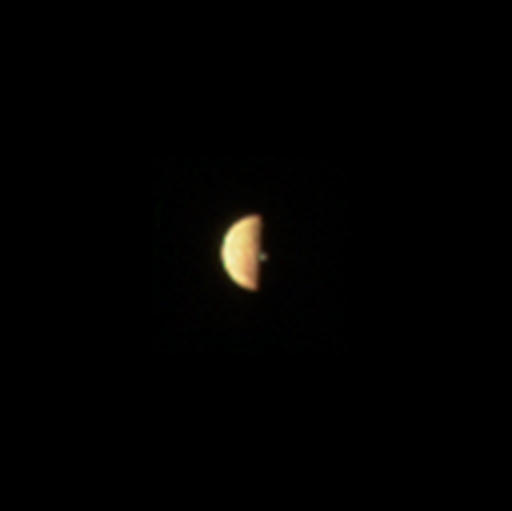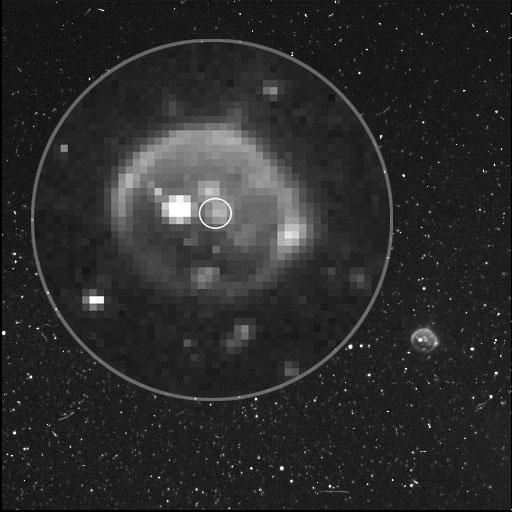Volcanic Plume on Jupiter's Moon Io Spied by Juno Spacecraft
NASA's Juno spacecraft has captured an intriguing image of a volcanic plume straddling the line between day and night on Jupiter's notoriously eruptive moon Io.
The image is part of a larger data set gathered on the spacecraft's Dec. 21 close skim over the planet's surface, when four of Juno's cameras spent more than an hour watching the volcanic moon's pole. All told, the observations are a nice scientific bonus for the Juno team, because the spacecraft's primary job is to study Jupiter itself.
"We knew we were breaking new ground with a multispectral campaign to view Io's polar region, but no one expected we would get so lucky as to see an active volcanic plume shooting material off the moon's surface," Scott Bolton, principal investigator of the Juno mission, said in a statement released by the Southwest Research Institute, which contributed two instruments to the mission. "This is quite a New Year's present, showing us that Juno has the ability to clearly see plumes." [Volcanic Io: Amazing Photos of Jupiter's Active Moon]
The spacecraft's observing period was split into two phases, because Jupiter came between the sun and Io. Before that eclipse, the visible-light camera JunoCam could study Io in stronger light, watching the pole as day turned to night. The camera snagged three images during this period, all of which caught sight of a plume right along the moon's terminator, where day and night meet.
"The ground is already in shadow, but the height of the plume allows it to reflect sunlight, much like the way mountaintops or clouds on the Earth continue to be lit after the sun has set," Candice Hansen-Koharcheck, the JunoCam lead from the Planetary Science Institute, said in the same statement.
After Jupiter blocked out the sun, Juno's Stellar Reference Unit camera took over. That instrument is designed to help the spacecraft track its location in the cosmos, but the camera requires fainter lighting — like the sunlight reflected off nearby moon Europa during the observing period. However, this camera also spotted evidence of the plume.
A third instrument, the Jovian Infrared Auroral Mapper (JIRAM), was also active during the observing period, capturing information about hotspots on the moon's surface. In July, that same instrument spotted a previously undetected hotspot on the volcanic moon.
Breaking space news, the latest updates on rocket launches, skywatching events and more!
Scientists have known Io is volcanically active since 1979. The activity is spurred by Jupiter's massive gravity tugging at the moon.
NASA's $1.1 billion Juno spacecraft launched to Jupiter in August 2011 and arrived in orbit around the gas giant on July 4, 2016. The mission is expected to run through 2020.
Editor's note: This story has been updated to correct typos in the final paragraph. Email Meghan Bartels at mbartels@space.com or follow her @meghanbartels. Follow us @Spacedotcom and Facebook. Original article on Space.com.

Meghan is a senior writer at Space.com and has more than five years' experience as a science journalist based in New York City. She joined Space.com in July 2018, with previous writing published in outlets including Newsweek and Audubon. Meghan earned an MA in science journalism from New York University and a BA in classics from Georgetown University, and in her free time she enjoys reading and visiting museums. Follow her on Twitter at @meghanbartels.



